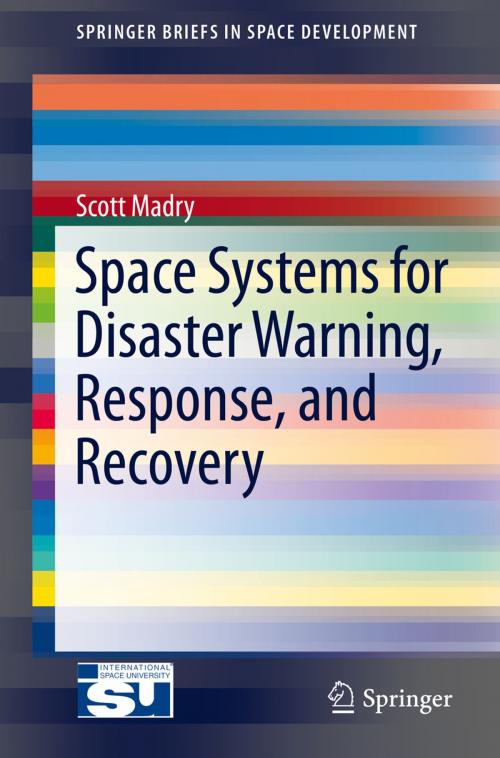Space Systems for Disaster Warning, Response, and Recovery
Nonfiction, Science & Nature, Technology, Aeronautics & Astronautics, Science, Physics, Astrophysics & Space Science| Author: | Scott Madry | ISBN: | 9781493915132 |
| Publisher: | Springer New York | Publication: | September 6, 2014 |
| Imprint: | Springer | Language: | English |
| Author: | Scott Madry |
| ISBN: | 9781493915132 |
| Publisher: | Springer New York |
| Publication: | September 6, 2014 |
| Imprint: | Springer |
| Language: | English |
This SpringerBrief provides a general overview of the role of satellite applications for disaster mitigation, warning, planning, recovery and response. It covers both the overall role and perspective of the emergency management community as well as the various space applications that support their work. Key insights are provided as to how satellite telecommunications, remote sensing, navigation systems, GIS, and the emerging domain of social media are utilized in the context of emergency management needs and requirements. These systems are now critical in addressing major man-made and natural disasters. International policy and treaties are covered along with various case studies from around the world. These case studies indicate vital lessons that have been learned about how to use space systems more effectively in addressing the so-called “Disaster Cycle.”
This book is appropriate for practicing emergency managers, Emergency Management (EM) courses, as well as for those involved in various space applications and developing new satellite technologies.
This SpringerBrief provides a general overview of the role of satellite applications for disaster mitigation, warning, planning, recovery and response. It covers both the overall role and perspective of the emergency management community as well as the various space applications that support their work. Key insights are provided as to how satellite telecommunications, remote sensing, navigation systems, GIS, and the emerging domain of social media are utilized in the context of emergency management needs and requirements. These systems are now critical in addressing major man-made and natural disasters. International policy and treaties are covered along with various case studies from around the world. These case studies indicate vital lessons that have been learned about how to use space systems more effectively in addressing the so-called “Disaster Cycle.”
This book is appropriate for practicing emergency managers, Emergency Management (EM) courses, as well as for those involved in various space applications and developing new satellite technologies.















